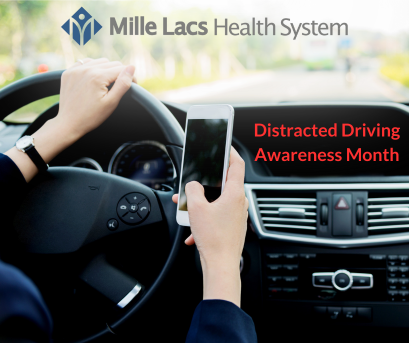Protecting Yourself and Others From Distracted Driving
April 2, 2025
April is National Distracted Driving Awareness Month. The National Highway Traffic Safety Administration (NHTSA) reports that nine people in the United States are killed every day in an accident caused by a distracted driver. Twenty percent of these deaths are people who were not even in a vehicle at the time of the incident. Distracted driving is a serious issue, and it’s important to understand why it’s so common, as well as learn ways to prevent yourself and others from being inattentive behind the wheel.
There are a number of behaviors that people engage in behind the wheel that prevent their eyes from being solely on the road. The most common are talking to other passengers, adjusting the radio, eating and drinking, making phone calls, and reading and writing text messages. According to the NHTSA, behaviors that increase the risk of crashing the most are dialing a cell phone, reading and writing, reaching for an object, texting, and looking at something outside.
While everyone is susceptible to being distracted while driving, certain demographics are more likely to engage in behaviors that put them at risk. Teen drivers in particular are most prone to cell phone use while driving and are three times more likely to die in a fatal crash than adults. Younger adults are more likely to multitask, including checking emails and texting, and are more reliant on navigation systems, which is a common visual distraction.
Fortunately, there are many steps that you can take to protect yourself and others. Before you even begin to drive, you should make sure to adjust everything beforehand, including your mirrors, seat, radio or music selection, and climate controls. Ensure that any loose possessions are stored securely and will not roll around. Set aside your cell phone and consider utilizing a safe driving app that disables the use of your phone. Make certain that any children are secure and pull over safely if they need attention, instead of reaching into the backseat. If you’re a passenger, assist the driver with navigation and regularly check to make sure they are entirely focused on the road.
Minnesota has also passed laws to prevent distractions when driving. It’s illegal to drive anywhere in the state while operating a phone in your hand. You can use your phone to make calls, listen to music, and get directions, but only through voice commands or single-touch activation. You can face felony charges for injuring or killing someone while being distracted behind the wheel.
Mille Lacs Health System is committed to promoting community safety and well-being, which includes raising awareness about the dangers of distracted driving. As a healthcare provider, we see firsthand the devastating consequences of preventable accidents caused by inattentive driving. This April, we encourage everyone to take the proper steps to eliminate distractions, protect themselves and others on the road, and adhere to Minnesota’s hands-free law. By staying focused while driving, we can reduce the risk of accidents and work together to create a safer community for all.
